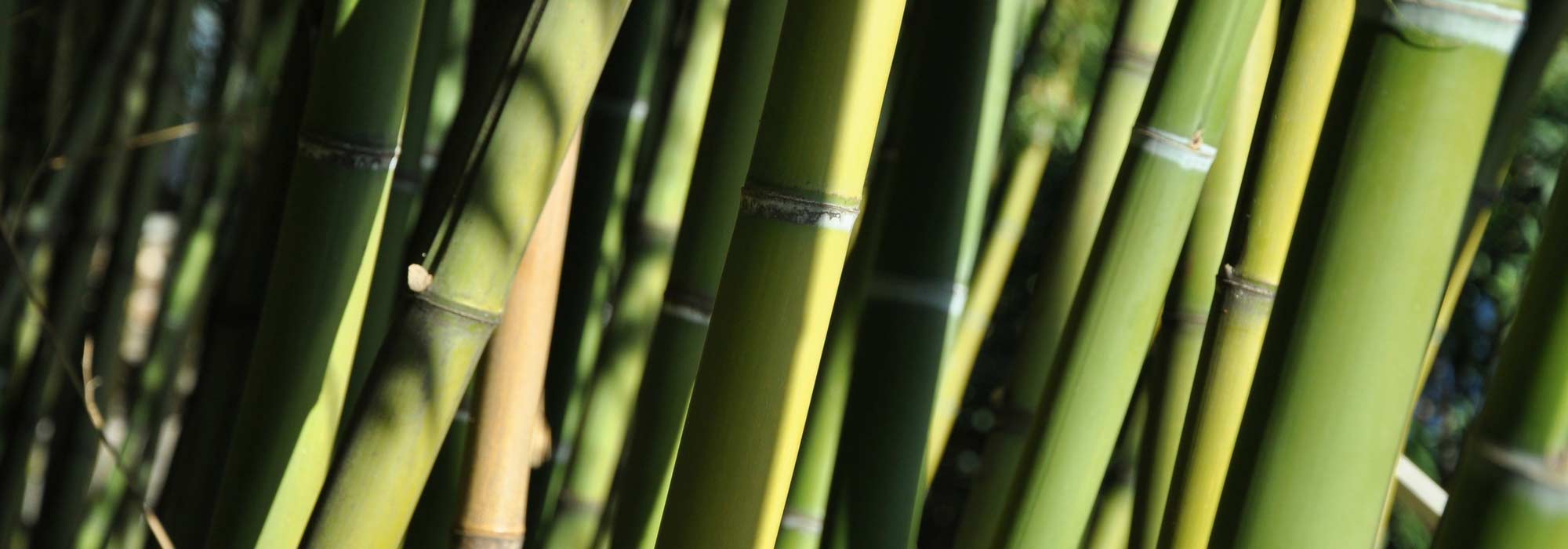
What type of bamboo to choose? Our advice
For pots, hedges or border
Contents
The choice of a bamboo depends on the use you wish to make of it. There is a bamboo for every garden! Graphic and elegant, bamboos bring an Asian and exotic touch to the garden as a border or backdrop, as a standalone, as a windbreak or privacy screen on the balcony or terrace, or even as a hedge.
Bamboos come in different sizes: dwarf bamboos (from 20 cm to 1.5 m), medium bamboos (from 2 to 8 m), and giant bamboos (8 m and more). They are also distinguished by their type of growth, with running types like Phyllostachys and non-running types known as “cespitose” like Fargesia, which have the advantage of being less invasive than other bamboos.
In a hedge, border, in a pot, or as ground cover, whether running or non-running, how do you choose the right bamboo? Read our tips and discover our superb selection of bamboos chosen for their cold resistance and aesthetic appeal.
Running or non-running?
Bamboos are classified into two subfamilies:
- the running types, which spread and colonise if not limited by a rootstock barrier,
- and the non-running or cespitose types, which remain neatly in place.
How to choose?
It all depends on the space you wish or can allocate to them. If you want to plant large bamboos either alone or in a clump, or even to create a forest, the answer is simple: opt for the running varieties with impressive dimensions and rapid, vigorous growth, such as Phyllostachys aureosulcata ‘Aureocaulis’ and Semiarundinaria fastuosa ‘Viridis’. The only requirement: dig a trench and install a rootstock barrier during planting to contain their expansion, which can quickly become uncontrollable.
To learn more: Phyllostachys: planting, growing
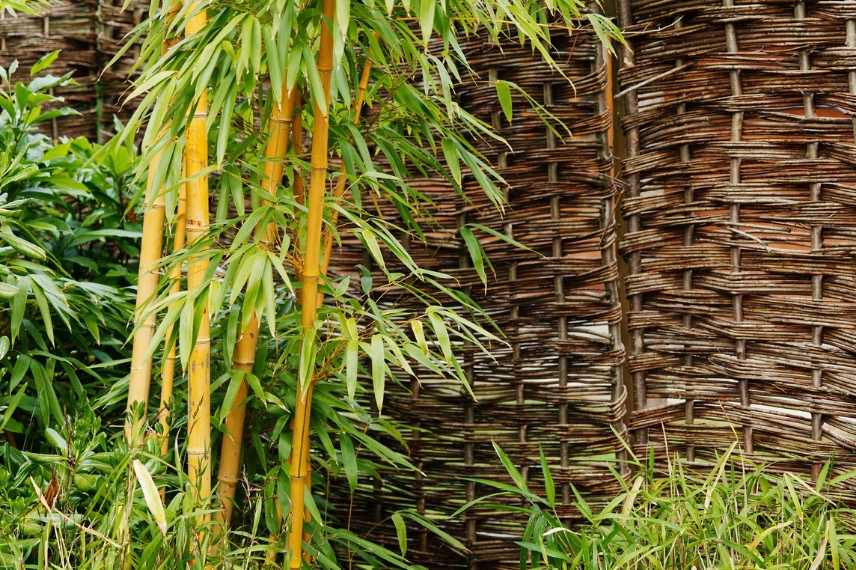
If you have a small garden, a simple terrace, or if the invasive nature of bamboos worries you, plant cespitose bamboos. Non-invasive, they grow in compact clumps but take a bit longer to fill out than the running varieties (allow at least 5 years for a well-furnished foliage).
This type of bamboo will not extend beyond the space you allocate to it. This way, you will avoid the hassle of setting up a rootstock barrier. The Fargesias, such as Fargesia murielae ‘Jumbo’, Fargesia robusta, and Fargesia nitida Great Wall are the most suitable!
Read also
Bamboo: a successful planting in 4 stepsFor pot and small garden
The invasive nature of bamboo may frighten you, but growing it in a pot remains a good alternative to bring a Japanese or contemporary touch to your terrace, small garden, or balcony. Many bamboos thrive in containers.
Prefer clumping species over running species, such as Fargesia. Much easier to contain in pots, they stay well in place and won’t cause you any trouble. They form a compact tuft with dense foliage, and their growth is easy to control with regular pruning. Some exhibit a weeping habit, while others have fine and delicate graphic foliage.
That said, Phyllostachys, which are very running and fast-growing bamboo species, can also succeed in pots as long as you provide them with a sufficiently large container: in pots, this type of bamboo will be limited in its growth and will never reach 10 m in height. A good reason not to miss out on the very graphic Phyllostachys nigra, the only bamboo with ebony black culms.
Our favourite bamboos for pots
Discover other Bamboos
View all →Available in 2 sizes
Available in 3 sizes
Available in 3 sizes
Available in 1 sizes
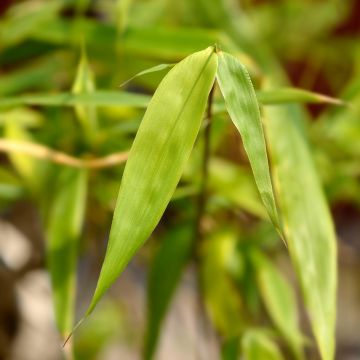
Available in 3 sizes
Available in 2 sizes
Available in 1 sizes
Available in 2 sizes
Available in 1 sizes
Available in 1 sizes
For a hedge
With a growth rate that is often astonishing, bamboo allows for the creation of beautiful hedges to effectively protect against wind, noise, and unwanted views in a short time (2-3 years). With its attractive foliage all year round and colourful canes, it can create a lovely evergreen curtain at the back of a flowerbed or partition spaces in the garden, such as on a terrace or balcony. The bamboo hedge provides refreshing shade in summer and attenuates gusts of wind in winter.
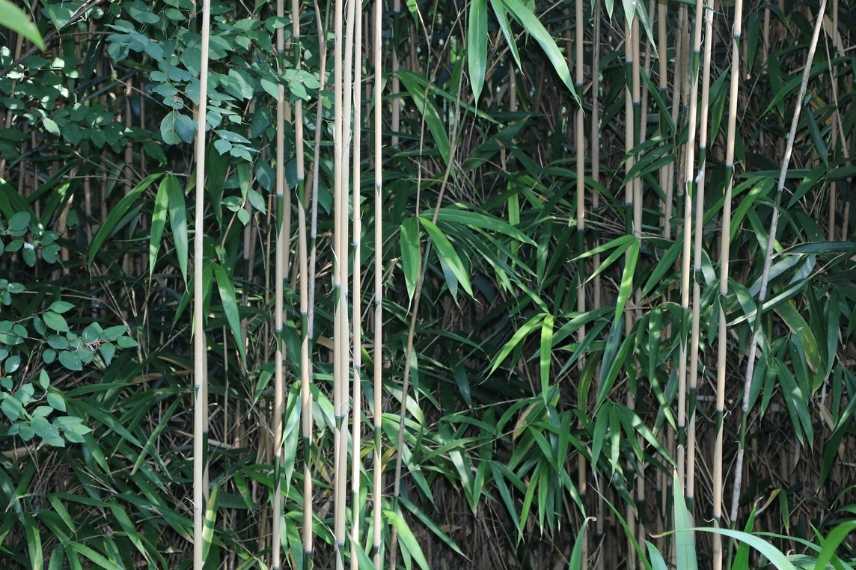
Bamboo hedge
Compose a homogeneous hedge made up of a single variety. Bamboos offer a great diversity of foliage, culm colours, and heights, providing multiple possibilities to create a unique hedge. Once well established, the bamboo hedge requires only annual pruning for maintenance.
The choice of variety depends on the desired effect. Non-running or cespitose bamboos will form dense clumps with very lush foliage; they take a bit longer to fill out than running varieties. Highly running species with rapid and vigorous growth require anti-rhizome barriers.
- For a low hedge (50 cm to 1 m), favour dwarf or small-sized bamboos with dense foliage and a bushy habit, such as Fargesia murielae Bimbo, Shibataea kamasaca, and Sasa veitchii.
- For privacy screens or windbreaks, medium-sized bamboos are well suited, such as Semiarundinaria fastuosa, Fargesia robusta, or Phyllostachys bissetii.
Read also
To grow bamboo in a potFor a flowerbed or shrubbery
In a garden, a simple grove of bamboos is enough to bring an Asian touch to your garden. They are easy to integrate into your flower beds. With their elegant foliage and graphic silhouette, bamboos add brightness and verticality to a decor. Used in isolated clumps, with their beautiful verticals, they are perfect for structuring a shrub border. The Fargesias, which do not require the installation of a rhizome barrier, are appreciated for their non-invasive character, while the Phyllostachys are valued for their architectural dimensions. Opt for bamboos of good stature, with colourful culms—fluorescent yellow, lime green, golden, black, or even blue, striated or zigzag, and variegated foliage for a spectacular exotic effect.
The tallest will create a backdrop that enhances the flowering within the border.
Mix them with grasses, hostas, ferns, cannas, and large dahlias like Dahlia imperialis. In a shrub border, they accompany sacred bamboo (nandina), spindle, Japanese maples, or a Loropetalum.
Our favourite bamboos for borders
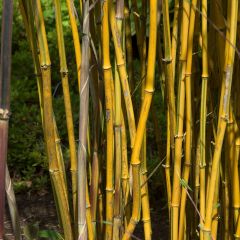
Phyllostachys aureosulcata Spectabilis - Bamboo
- Height at maturity 7 m
To create a living wall or a privacy screen
Bamboos are perfect for creating a curtain of greenery or a tall, dense windbreak in just a few years. Their graphic and robust canes do not break in the wind, and their light foliage adds a decorative as well as exotic touch. Opt for the tallest varieties of bamboos to create an effective windbreak. If you are not limited in space, do not hesitate to use running bamboos, as they will establish quickly.
Our favourites
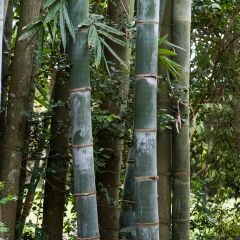
Phyllostachys nigra Henonis - Black Bamboo
- Height at maturity 10 m
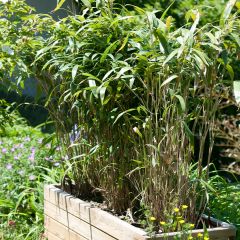
Pseudosasa japonica - Metake Bamboo
- Height at maturity 4 m
For an enchanting forest
If giant bamboos are perfectly suited for creating forests and bamboo groves that are wildly exotic, it is better to have a large space to accommodate these plant titans.
Spectacularly, they impress with their size ranging from 10 to 25 metres high and their rapid growth. However, their growth rate and maximum height will be conditioned by the heat and moisture content of the soil. It is worth noting that the development of a bamboo depends on cultural and climatic conditions: bamboos particularly enjoy light, very rich soils and warm, humid climates; in the north of the Loire, even a giant bamboo will rarely exceed 10 metres in height at ripeness. In heavy soil, a bamboo is less likely to spread.
The star of giant bamboos is Phyllostachys, renowned for its rapid growth. A rhizome barrier is essential to contain these born colonisers.
Our favourites
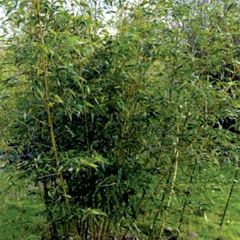
Phyllostachys bambusoides Castillonii Inversa - Giant Bamboo
- Height at maturity 10 m
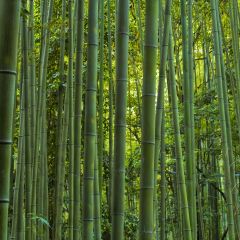
Phyllostachys vivax MacClure - Golden Chinese Timber Bamboo
- Height at maturity 12 m
The most beautiful canes and foliage of bamboo
The bamboo is highly valued for its graphic and colourful canes ranging from golden yellow to ebony black, including steel blue, striated, twisted, or smooth depending on the varieties. The light foliage, rustling at the slightest breath of wind, is always green and is tinged with off-white in some varieties.
Discover among our collection the bamboos that have the most beautiful canes and foliage.
Our favourites
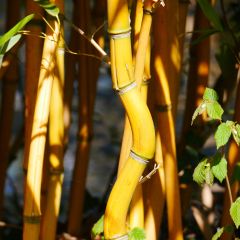
Yellow Bamboo - Phyllostachys aureosulcata Aureocaulis
- Height at maturity 6 m
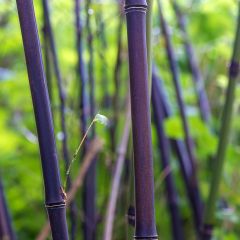
Black bamboo - Phyllostachys nigra
- Height at maturity 6 m
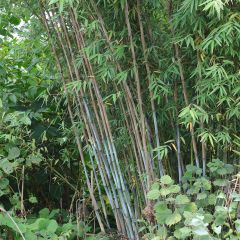
Fargesia papyrifera Blue Dragon - Non-running bamboo
- Height at maturity 6 m

Fargesia robusta Pingwu - Non-running bamboo
- Height at maturity 4,50 m
- Subscribe!
- Contents
































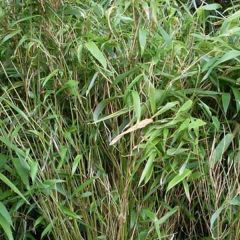
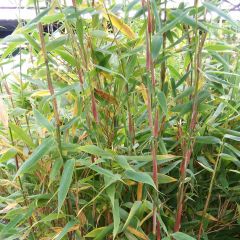
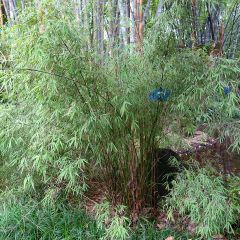
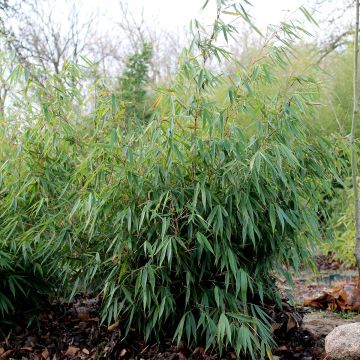


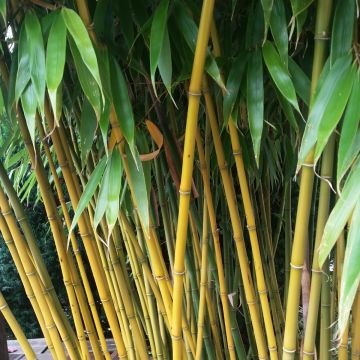
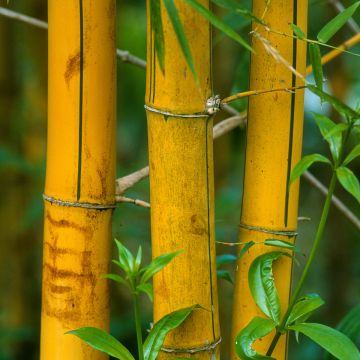


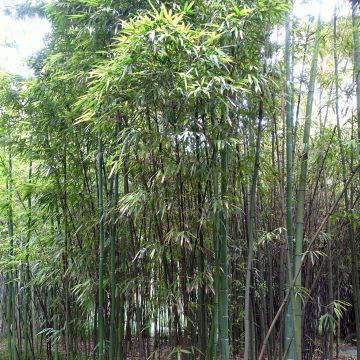
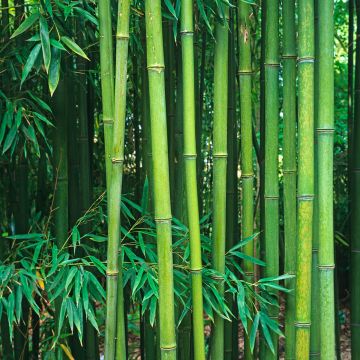
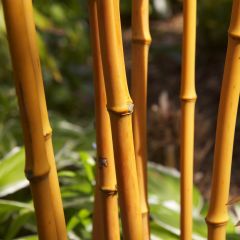
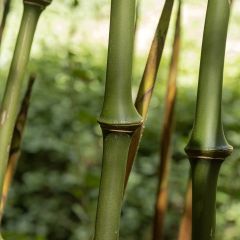

Comments